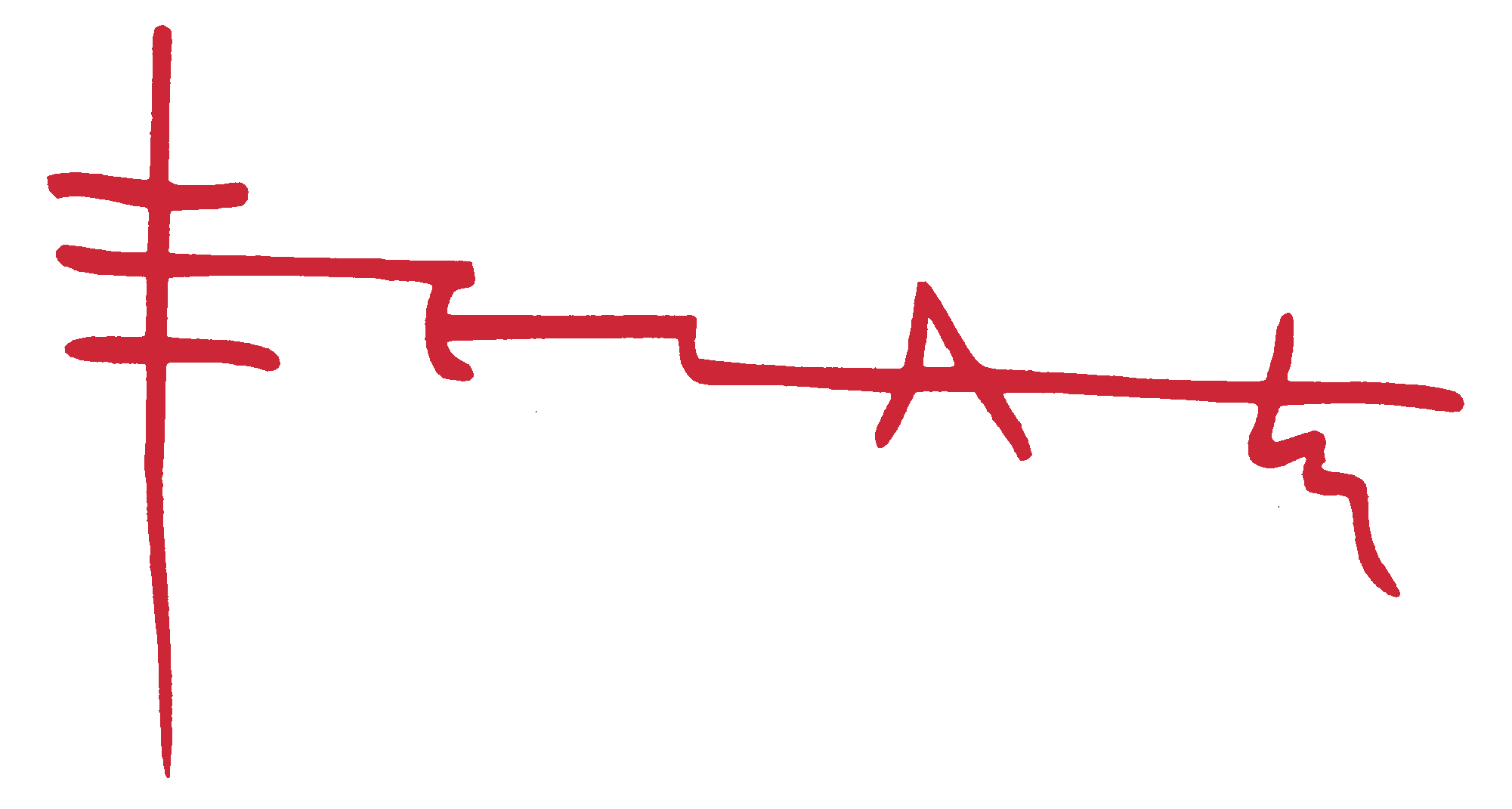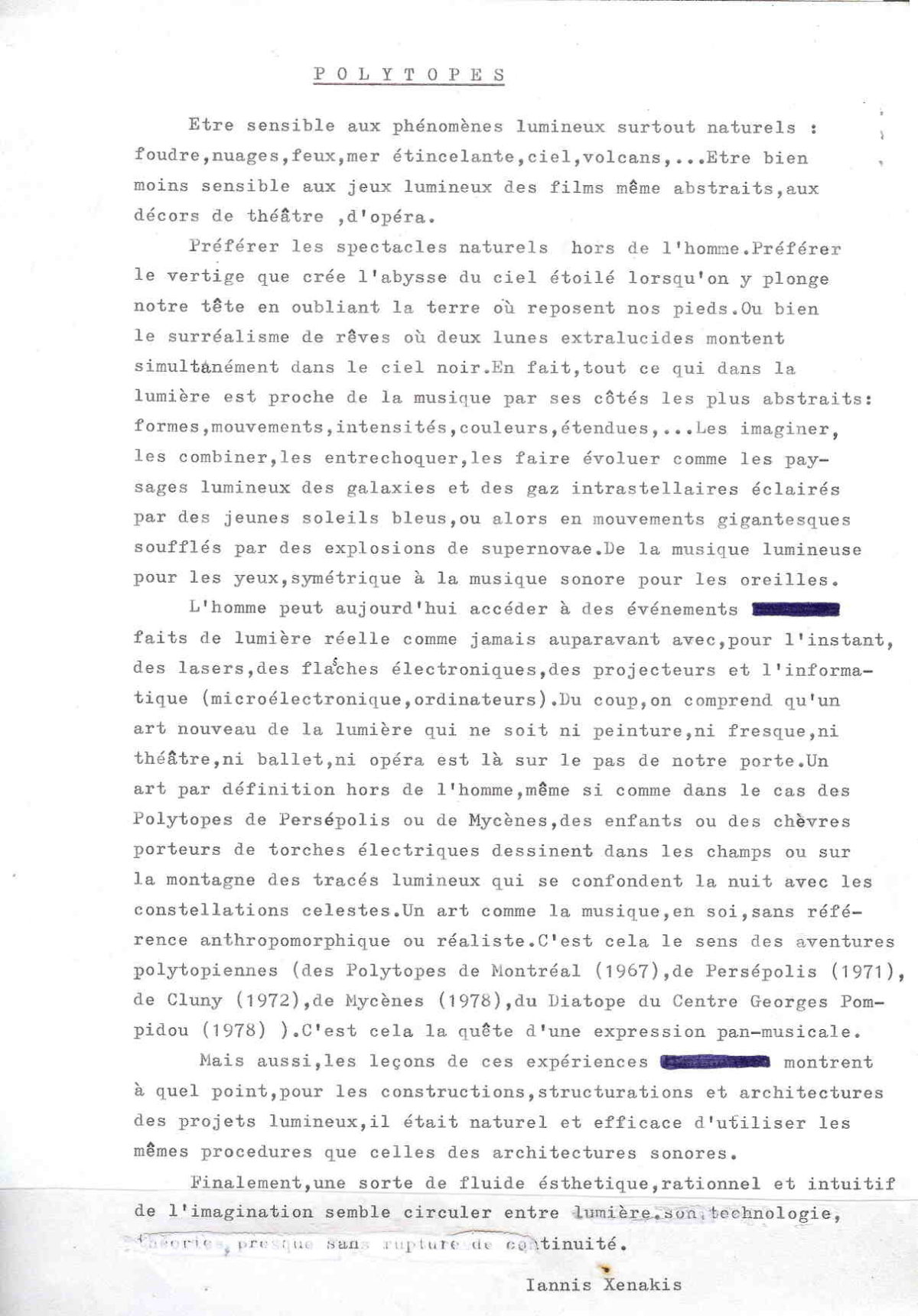Reproduction of an unpublished text, translated:
To be sensitive to the luminous phenomena, mainly natural: lightning, clouds, fires, sparkling sea, sky, volcanoes, … To be much less sensitive to the luminous games of the films even abstract, to the decorations of theater, of opera.
To prefer natural spectacles outside of man. To prefer the vertigo created by the abyss of the starry sky when we plunge our head into it, forgetting the earth where our feet rest. Or the surrealism of dreams where two extralucid moons rise simultaneously in the dark sky. In fact, everything in light is close to music by its most abstract sides: forms, movements, intensities, colors, expanses, … Imagine them, combine them, clash them, make them evolve like the luminous landscapes of galaxies and interstellar gases illuminated by young blue suns, or in gigantic movements blown by supernova explosions. Luminous music for the eyes, symmetrical to the sound music for the ears.
Today, man can access events made of real light as never before with, for the time being, lasers, electronic flashes, projectors and computers (microelectronics, computers). So, we understand that a new art of the light which is neither painting, nor fresco, nor theater, nor ballet, nor opera, is there on the step of our door. An art by definition outside of man, even if, as in the case of the Polytopes of Persepolis or Mycenae, children or goats carrying electric torches draw in the fields or on the mountain luminous tracings that merge at night with the celestial constellations. An art like music, in itself, without anthropomorphic or realistic reference. This is the meaning of the polytopian adventures (of the Polytopes of Montreal (1967), of Persepolis (1971), of Cluny (1972), of Mycènes (1978), of the Diatope of the Centre Georges Pompidou (1978)). It is that the search for a pan-musical expression.
But also, the lessons of these experiments show to what point, for the constructions, structurations and architectures of the luminous projects, it was natural and effective to use the same procedures as those of the sound architectures.
Finally, a kind of aesthetic, rational and intuitive fluid of the imagination seems to circulate between light, sound, technology, theory, almost without break of continuity.
Iannis Xenakis

